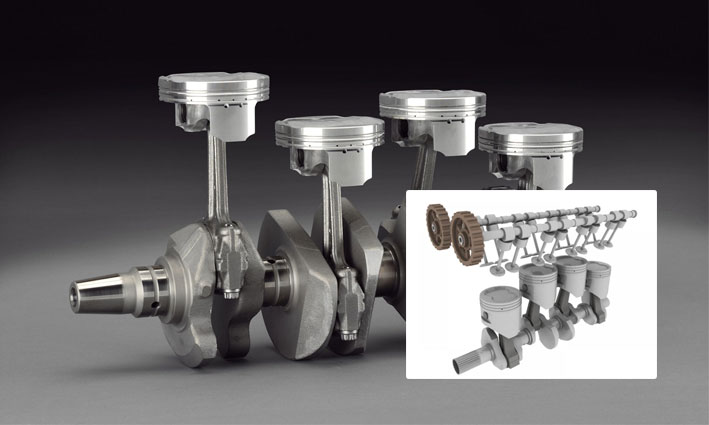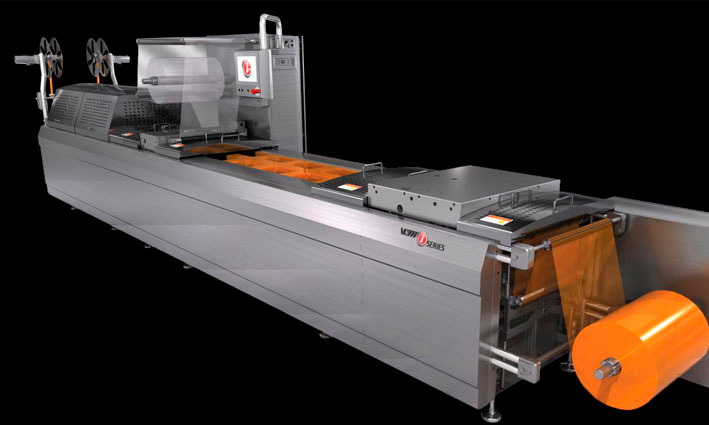
Engine Dynamics
A four-stroke engine was analyzed in depth by means of a detailed Multibody Dynamics (MBD) simulation.
The real components of the engine (including the engine block, piston, rod and crankshaft) were imported as flexible bodies and assembled.
Efficient contact technology allowed realistic simulation of the kinematic joints with clearance between the coupled parts. A detailed representation of the experimental engine loads completed the engine model.
This type of highly-defined model provides valuable outputs: the contact analysis provides detailed information about the pressure and friction between the parts, which is useful for estimating wear. Joint clearances and the flexibility of bodies permits the precise detection of excessive part deformations and stresses, or of unwanted system vibrations. In addition, special-purpose components (eg. elastohydrodynamic (EHD) bearings) can be easily modeled using RecurDyn’s feature package that is dedicated to engine and powertrain simulation.
